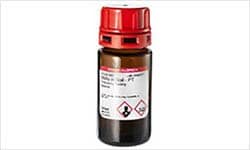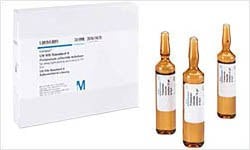Gas Chromatography (GC)

Gas chromatography (GC) is a common analytical technique used to separate and analyze volatile and semi-volatile compounds in a mixture. GC is a popular analytical technique as it combines exceptional resolving power with speed and sensitivity. It is widely applied in many industries, including environmental, petroleum, chemical, food and beverage, and pharmaceutical.
Like other forms of chromatography, GC involves a stationary phase and a mobile phase. In GC, the mobile phase is an inert gas, usually helium or nitrogen, and the stationary phase is either a solid adsorbent, termed gas-solid chromatography (GSC), or a liquid adsorbed onto an inert support, termed gas-liquid chromatography (GLC, or just GC).
Find Chromatograms
Related Articles
- Achieve better gas chromatography separations with an appropriate column. Review the most significant factors for gc column selection: stationary phase, internal diameter, film thickness, and column length.
- In 1983, the first special purpose fused silica capillary GC column was introduced. Since then, an impressive list of special purpose fused silica capillary GC columns has followed.
- The Derivatization and Analysis of Amino Acids by GC-MS
- See All (25)
Related Protocols
- Syringes are precision instruments and need care. Learn to correctly inspect, use, unclog, handle, clean and store them to ensure good accuracy, reproducibility, and lifetime.
- There are three types of analyses: GRO, DRO, and TPH. The published methods are simply variations of these to meet the different analytical needs of the individual agencies.
- See All (43)
Find More Articles and Protocols
How does gas chromatography work?
After sample collection and preparation, the analytes of interest are separated inside the column and then a detector measures the quantity of the components that exit the column. In GC, an analyte is injected into the instrument’s sampling port and enters an oven where it is vaporized. The vaporized sample is transported through a chromatographic column by the flow of inert gas that forms the mobile phase. Compounds in the sample partition between the column’s stationary phase and the carrier gas. The strength of compound-stationary phase interaction determines an analyte’s retention time. At the column’s outlet, a detector (MS or non-MS) creates a signal when compounds pass by. A chromatogram is the result of a GC separation.
To measure the concentration of a test sample, a standard sample with known concentration is injected into the GC instrument. The peak retention time and area of the standard is compared to the test sample’s results to determine the unknown concentration. In GC, external and internal standards are commonly employed in order to ensure reliable quantification of the test sample. When known standards are run separately from the actual sample of interest and the response is compared to that of the sample in another chromatogram, it is referred to as an external standard. When the standard is added to the sample and analyzed simultaneously, it is called an internal standard.
Sample Collection and Preparation for GC analysis
Many samples can be analyzed by GC so long as the compounds are reasonably volatile (can be vaporized) yet are thermally stable (do not degrade at high temperature). Samples can be collected from solid, liquid, or gaseous materials. When preparing samples for GC, it’s important to minimize sample complexity because the quality of the sample impacts the accuracy and precision of your final chromatographic results. A wide variety of matrix-specific sample preparation techniques are available to help isolate and concentrate analytes and sample matrices prior to GC analysis.
How to choose a GC column
The GC column is the heart of a GC system, where chromatographic separation occurs. Selecting the proper GC column should be based on 4 significant factors: stationary phase, column internal diameter (I.D.), film thickness, and column length. These factors impact column efficiency, resolution and sample capacity.
The stationary phase should be selected based on the application to be performed.
Gas Chromatography (GC) Workflow Solutions
To continue reading please sign in or create an account.
Don't Have An Account?


